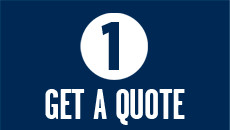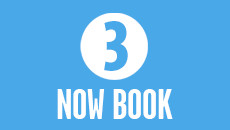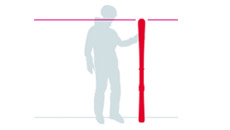
Select your holiday data:
Resort, Pick up, Return time
Enter your personal details:
Ability, height, age …

Select your holiday data:
Resort, Pick up, Return time
Enter your personal details:
Ability, height, age …

All models are shown in the correct length!
Skis/snowboards recommended for your ability!
All available in your chosen time period!
And all at the lowest price!

Place each item in the shopping cart.
Payable with credit card or transfer.
Confirmation Email for your order.
And then: look forward to skiing!

Recommended length: Chest to shoulder
Pistes: Blue, Red | Ski Body: Soft
Tip: The shorter the ski, the easier
it is to turn for beginners.

Recommended length: Shoulder to nose
Pistes: Blue, Red | Ski Body: Soft/Medium
Tip: For intermediates up to the shoulder/chin.
Ski length for advanced up to the nose.

Recommended length: Chin to crown
Pistes: Red, Black | Ski Body: Hard
Tip: Slalom skis are shorter (chin)
than Giant slalom models (crown).
Our ski finder software will find the right length of ski for you. As a guideline to find your optimal ski length for your ability, we first of all need to know your ability, weight, height, sex and age. Our ski finder will then calculate the right ski length for you based on these details. Naturally the final decision is yours and each person will have their own individual preferences and requirements for their optimum ski length.

The shorter the ski, the easier it is to turn. The optimal length will be between the chest area and shoulders.
Ski instructor tip:A ski that is too short should not be chosen as you will lose stability and reliability while turning as you have a shorter edge grip.

Intermediate skiers should choose a ski length between their shoulders and chin.
Ski instructor tip:If you are deciding between a choice 2 different lengths, then choose the longer one. All of our skis have Rocker systems! This means that the ski at the tip of the shovel is curved upwards. So in effect the ski is will act like a shorter ski. A ski with a rocker tip of 10 % is 10% shorter in turning length. This makes turns a lot easier but the ski will use the whole edge through the turn which increases stability.

Experienced skiers can use a ski that comes up to their nose.
Ski instructor tip:Optimal ski length will also play a role in various snow conditions. If you are going on holiday between December and February then we recommend a longer ski as the pistes are more hard packed and sometimes icy. A longer ski will provide a longer edge grip and hence more stability. If you are skiing in March/April then we recommend a slightly shorter ski. When the snow is softer, you will need more energy to turn therefore a shorter ski is easier. You will also not be travelling as fast.

Sporty skiers have power, endurance, condition, coordination and skills to choose any ski they choose. It is important to pick a ski that has good stability. Pay particular attention to the radius of the ski. Short radius are slalom skis. Long radius are giant slalom skis.
Ski instructor tip:It all depends on your skiing technique and the model of the ski. If you ski with short turns then choose a slalom ski. This ski length is generally shorter. Short codes for these skis are ST, SL and SC. If you prefer a longer turn then choose a giant slalom ski. These are longer and should reach the top of your head. You can ski faster and a longer edge grip in turns and more stability. Short codes for these skis are GS, LT, RS and RC.

The race skier knows exactly what they want! Slalom skiers choose a short ski which is durable and agile but one that also explodes out of the turns. In comparison a giant slalom skier will choose longer ski with a smaller sidecut and a long radius. This is because a longer has more stability, reliability and smoothness at high speeds.
Ski instructor tip:Choose a designated race model. Stability and agilty are the most important factors.
Our board finder software will find the right length of board for you. As a guideline to find your optimal board length for your ability, we first of all need to know your ability, weight, height, sex and age. Our board finder will then calculate the right board length for you based on these details. Naturally the final decision is yours and each person will have their own individual preferences and requirements for their optimum board length

The shorter the board is, the easier it is to ride. The optimal length is to the chest.
Ski instructor tip:Snowboard instructor tip: Do not choose a board that is to short as you will lose stability!

It all depends on what you love! Piste, powder or park or a little bit of everything. If you are mainly on piste then choose a board between your chest and shoulder. In the park it is better to choose a shorter board up to your chest as it is more flexible while doing tricks. If you like going fast or off piste then we would recommend a slightly longer board. You will get better floatation in deep snow.
Ski instructor tip:It all depends on the shape of the board. For the best all round experience on the piste, park and powder, choose a symmetrical board i.e True Twin.

If you like going fast or in the back country, then choose a longer board.
Ski instructor tip:Longer boards are known as Wide boards as they are slightly wider. These are better in deep powder. Tip: If you have larger feet then choose a Wide board as you will have a better foot position on the board. This gives you a better riding stance and more fun in the turns.

Please enter a maximum hire duration of 14 days